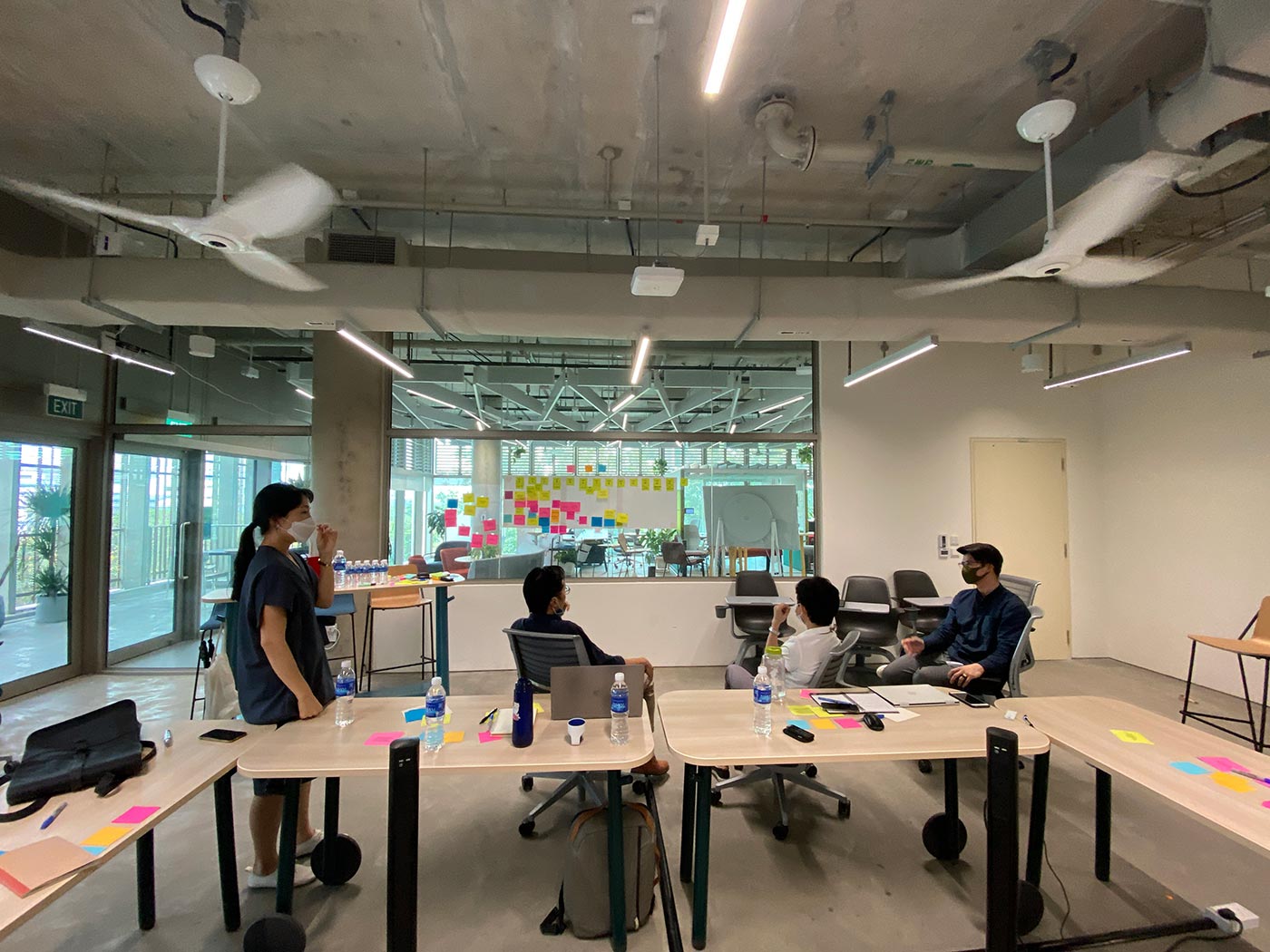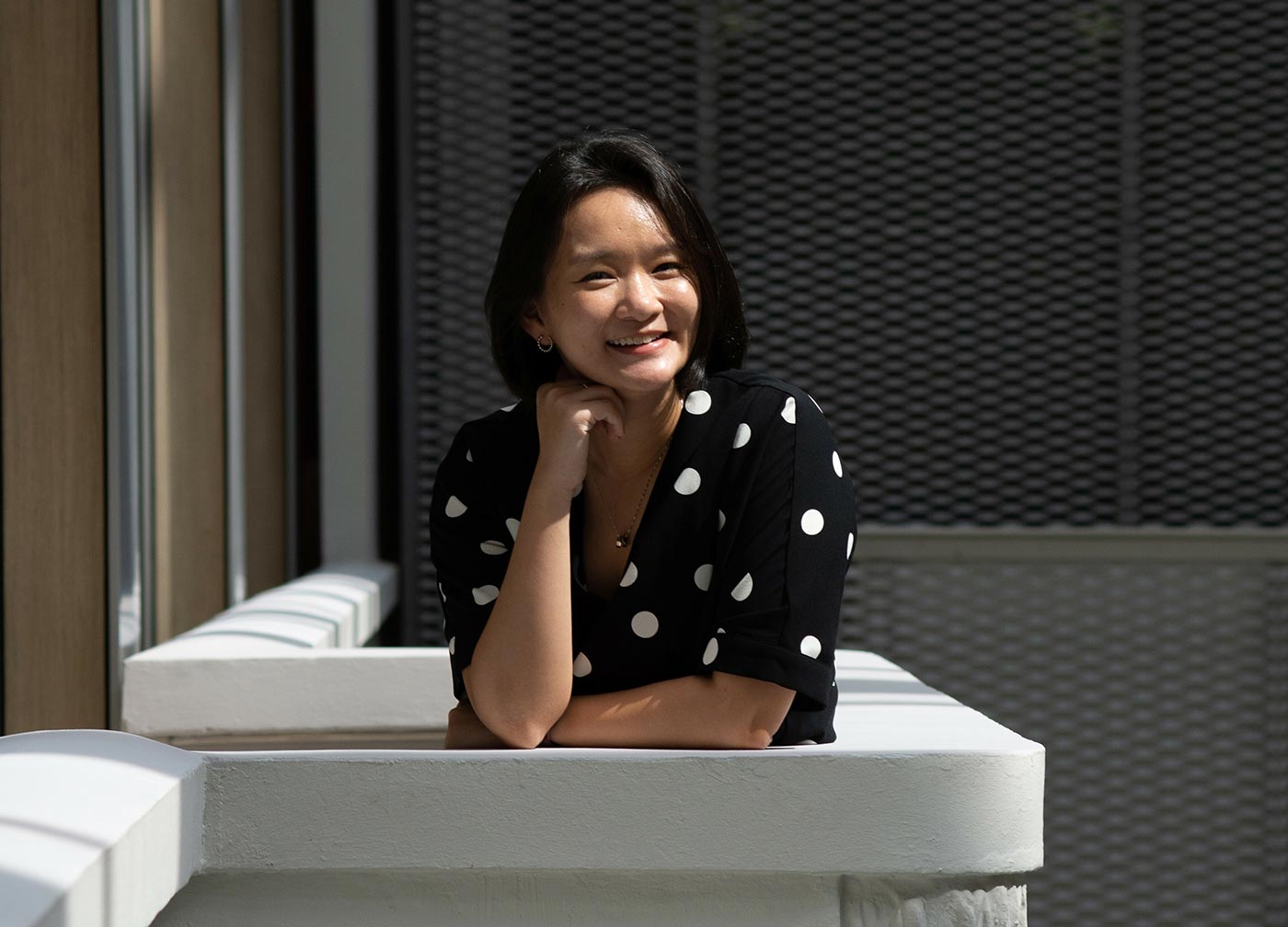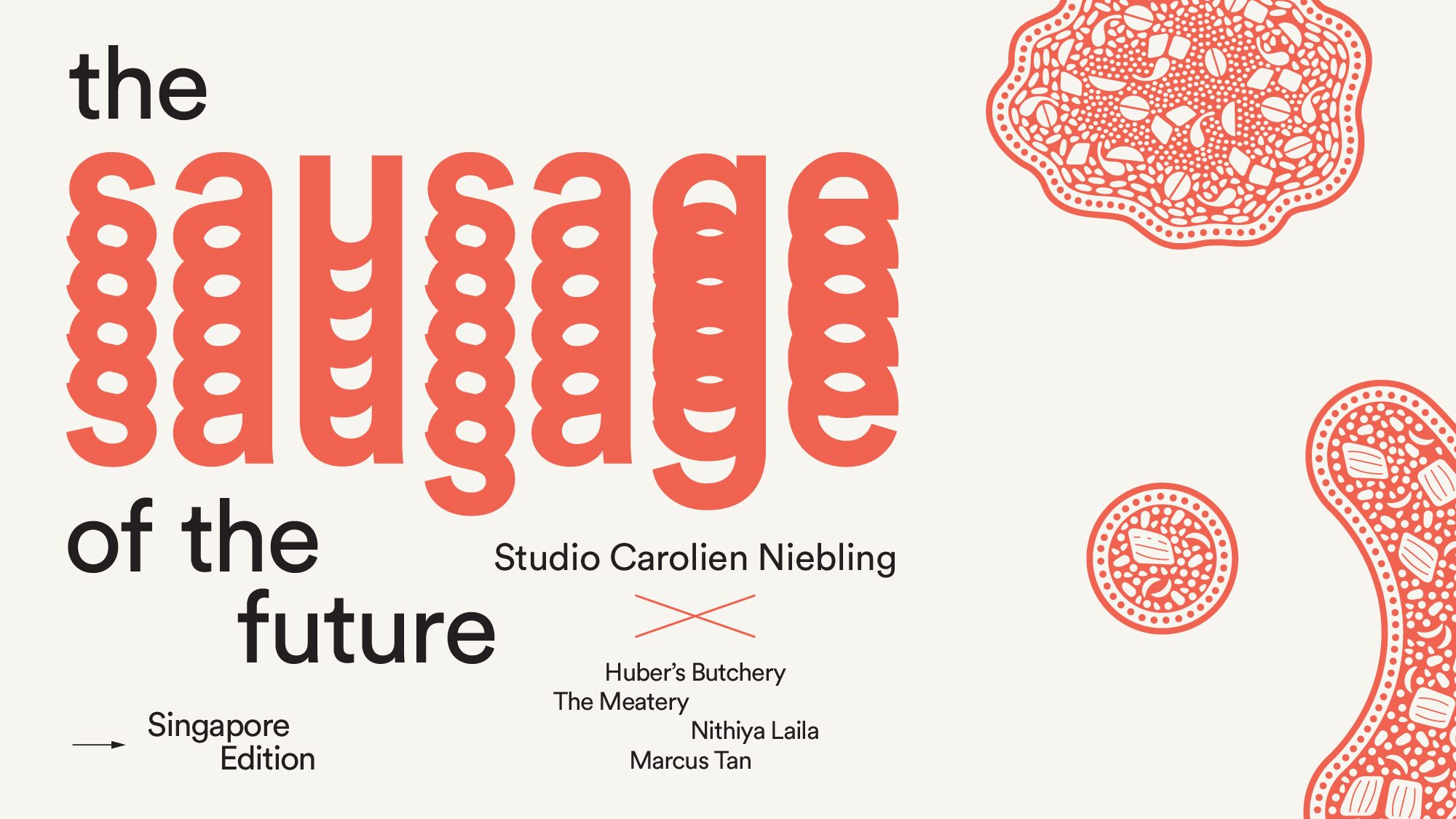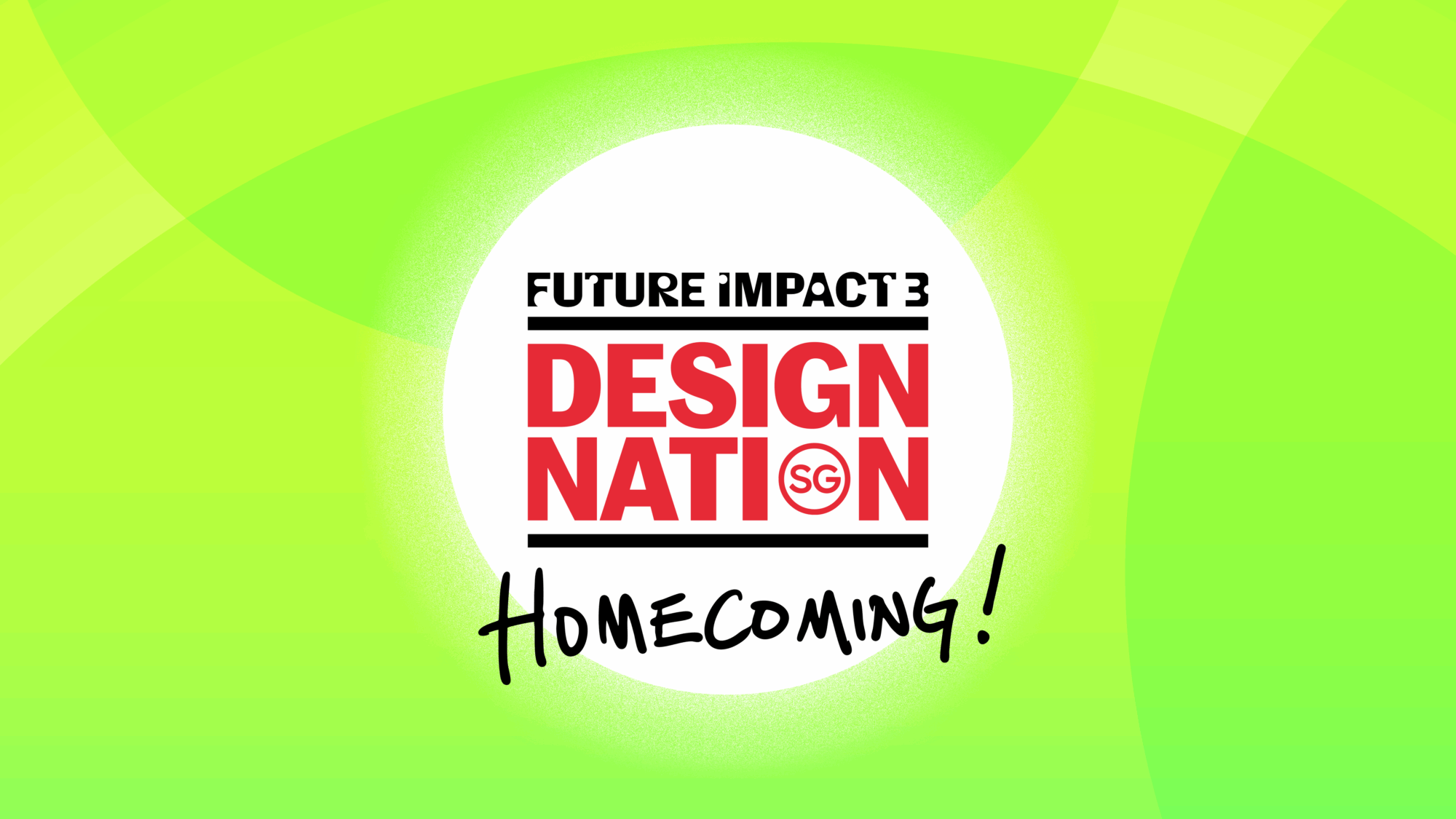She’s Taking Design Outside of Design School
After obtaining a diploma in facilities management, Chew Jia Ying applied to study industrial design—despite knowing nothing about it. The switch in disciplines opened her eyes to how design works across different domains. And now she is an advocate for blending disciplinary boundaries in higher education, which she has been exploring as an Education Design Strategist at the Division of Industrial Design in the National University of Singapore (NUS).
In 2020, Ms Chew also began researching the role of design in transdisciplinary higher education for her PhD studies at the University of the Arts London (London College of Communication) with the support of the DesignSingapore Scholarship. We catch up with the self-professed “jack of all trades, master of none” to learn about her progress over the past year and why she believes designers are the “chameleons” of the future.
1. Why did you apply for the DesignSingapore Scholarship?
I had just completed my Master’s degree in International Design Business Management at Aalto University in Finland when a team from the DesignSingapore Council (Dsg) happened to visit the campus. Through them, I learnt about the Design Education Review Committee Report, which has identified challenges and directions in design education that I observed too. When I decided to pursue my PhD, I applied for the scholarship to become more connected in Dsg’s efforts to shape the future of design education.
2. Tell us more about your research topic. What led you to it?
Prior to my research, I was a service design researcher at NUS where I met people from different fields, like the public service, banks and even social services. I realised it was difficult for people from different fields to communicate with one another even if they may be saying the same thing. For instance, the word “stakeholder” to a designer means everyone participating in the process. But in a business setting, a stakeholder is simply someone who pays for the product or service.
I also found the role of the designer unique in these situations. We are often not domain experts, and have to adapt to unfamiliar scenarios and code switch when conversing with people of varied disciplines. But we are able to identify issues from different perspectives. What is it about design that allows us to do that? That is “design” in the sense of knowledge exchange and integration. My research looks into the role of design in transdisciplinary higher education. I was curious to see how people from different disciplines can build a shared vocabulary and logic when they work together. This is often done in public policy design and organisational transformation, but less so in education which is why I am specialising in it.
3. How has your progress been?
As part of my research, I launched a 13-week module at NUS with faculty members from design, engineering and psychology to teach a collective of students from these three disciplines. They were tasked to work in multi-disciplinary teams with the engineering company Johnson Controls on a project to reimagine the future of work spaces. My goal was to identify the kinds of challenges that arise when teaching a class of students from different disciplines. Some of the initial findings suggest that besides issues in knowledge exchange and integration, there are also pertinent operational concerns which leads to the other part of my research that looks at organisational transformation.
The pilot module is the main case study of my action research project, which requires me to embed myself within the research context instead of simply being an observer. Typically, I would have started reviewing literature followed by field work, but the pandemic meant I was stuck in Singapore. I used it to my advantage to run the module first. I am planning to head to London soon for my examinations, and see my lecturers and peers for the first time too.

4. Blending boundaries between disciplines is not just your research topic, but the story of your career. What are some challenges you have faced thus far?
The process takes a lot of negotiation and “creative conflict”. It is a by-product of knowledge exchange and integration and important for breakthroughs to happen. We witnessed it with students in our module who do not necessarily see things the same way as they have varied disciplinary approaches. The design students were very big-picture oriented and wanted to figure out qualitatively what the issues are. But the engineering and psychology students would often try to narrow the scope and seek quantitative answers. They had to find a middle ground.
We also realised that we can put people of different disciplines together, yet no creative conflict arises. This happens when there is no ownership over the problem as individuals do not recognise how they can contribute. They may also shy away from conflict because it is seen as bad. This is another challenge we are trying to overcome, perhaps by giving participants more agency in the project. One way we are exploring this, is to engage in methods such as role-play to allow students to step out of their usual frame of thinking.
5. Besides being an educator and a PhD student, you are part of Nordic Rebels too. Tell us more about this movement and what it has been up to.
We are a diverse team from the fields of design, entrepreneurship and social innovation looking to create new ways of teaching and learning. In a way, we are rebelling against the traditional mode of education that is centred on knowledge-giving, and reliant on an educator who is expected to know it all. At Nordic Rebels, educators are more like facilitators. It is similar to how designers operate as we frequently work in unfamiliar domains.
We organised a workshop for the Beijing Design Week 2021 called “Digital Design Challenge: 36 Questions for Sustainability”. It was inspired by the “36 Questions That Lead to Love” survey that offers a quick and easy way for you to understand another person. Our participants adopted design methods to create questions for different companies to learn about how they approached sustainability. It offered a very quick and easy challenge for anyone to learn about the topic of sustainability and design.

6. What is your vision of the future of design education and how do you hope to contribute to it?
I believe that the value of design is not only in problem-solving but in its approach to framing challenges to develop creative concepts. The gap is in articulating how the design approach can be attuned to business acumen, and I hope to advocate for design to be that vehicle in blending boundaries through my research.
I also hope that we would see more progressive models in higher education where design can play a central role outside of the design school. This is how I see future designers being able to navigate their roles as “translators” and “chameleons”—by switching between our own disciplinary knowledge and facilitating a collective understanding amongst the many stakeholders of interconnected, complex problems.









